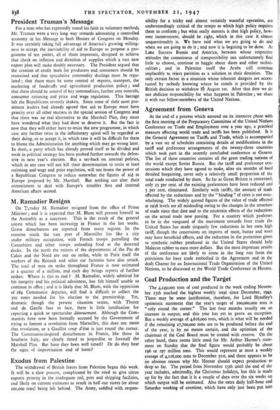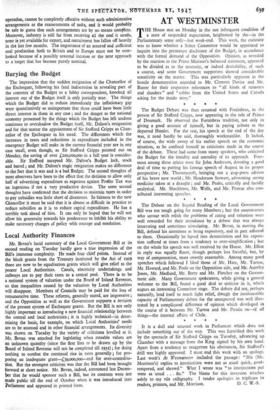Coal Production and the Target
The 4,249,000 tons of coal produced in the week ending Novem- ber t5th reached the highest weekly total since December, 1942. There may be some justification, therefore, for Lord Hyndley's optimistic statement that the year's target of 200,000,000 tons is " only round the corner." The last four months usually see an increase in output, and this year has yet to prove an exception. But a weekly average of 4,616,000 tons, which is what will be needed if the remaining 27,700,000 tons are to be produced before the end of the year, is by no means certain, and the optimism of the chairman of the Coal Board must be treated with reserve. On the other hand, there seems little need for Mr. Arthur Homer's state- ment on Sunday that the final figure would probably be about 196 or 197 million tons. This would represent at most a weekly average of 4,116,000 tons to December 31st, and there appears to be no obvious reason why Mr. Horner should expect production to drop so far. The period from November 15th until the end of the year includes, admittedly, the Christmas holidays, but this is made up for by the fact that it is a couple of days over the six weeks on which output will be estimated. Also the extra daily half-hour and Saturday working of overtime, which have only just been put into
operation, cannot be completely effective without such administrative arrangements as the reassessments of tasks, and it would probably be safe to guess that such arrangements are by no means complete. Moreover, industry is still far from receiving all the coal it needs, none is yet available for export, and recruitment has fallen off heavily in the last few months. The importance of an assured and sufficient coal production both to Britain and to Europe must not be over- looked because of a possibly seasonal increase or the near approach to a target that has become purely nominal.



































 Previous page
Previous page